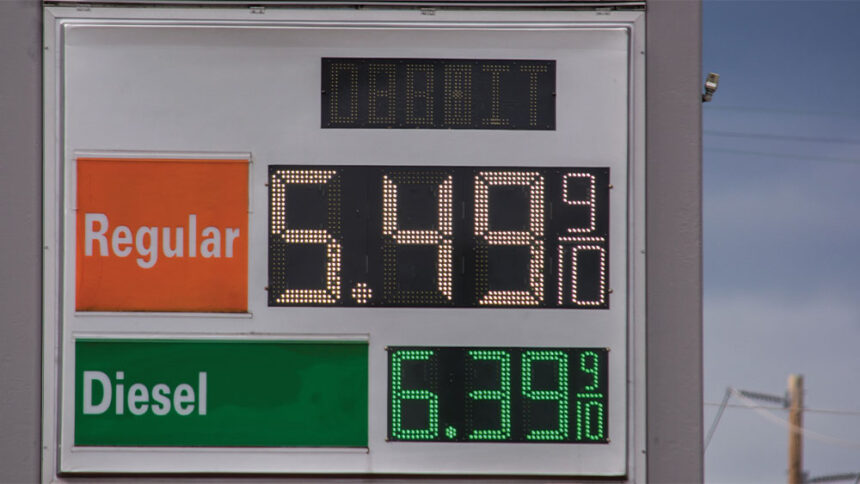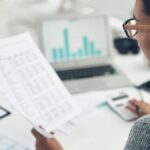The consumer price index for August, out Wednesday at 8:30 a.m. ET, is expected to show the headline inflation rate moving higher for the second straight month, fueled by higher gas prices. Yet economists expect a third straight month of tame core CPI inflation, which should keep the Federal Reserve content to forgo further rate hikes and increase the chances of a soft landing.
X
The S&P 500 fell modestly in Tuesday’s stock market action, dipping just below a key technical level as investors awaited the last big economic data point before next week’s Fed meeting. Markets see minimal chance of a rate hike, but the CPI data will influence the Fed’s policy projections that will be updated next week.
Thursday’s retail sales and producer price index reports, which will provide key updates on consumer spending and health care inflation, also could prove important.
CPI Inflation Forecast
Economists expect a 0.6% monthly jump in the CPI in August, following slim gains of 0.1% in May and 0.2% the past two months.
Higher gas prices are the culprit, with the average retail price having climbed to $3.94 per gallon, up 30 cents from early July, Energy Information Administration data shows.
The 12-month CPI inflation rate is expected to rise to 3.6%, from July’s 3.2% and June’s 3%, which was the lowest in more than two years.
However, economists don’t expect to see many signs that businesses are passing along higher energy costs by raising consumer prices.
The core CPI, which strips out volatile food and energy prices, is expected to rise 0.2% for a third straight month. That would lower the core CPI inflation rate to a 23-month low of 4.4%, from 4.7% in July.
Core inflation is continuing to come down primarily because core goods prices have been deflating the past two months. Goods prices, excluding food and energy, slipped 0.1% in June and 0.3% in July.
That trend may have continued in August. On Tuesday, Adobe, which tracks over 100 million online prices, said its Digital Price Index fell 3.2% from a year ago in August, the biggest drop in 40 months. Adobe’s data doesn’t include used-car prices, which have been one of the CPI categories with slumping prices.
The Economy Is Slowing
At his Aug. 25 speech in Jackson Hole, Wyo., Fed Chairman Jerome Powell tried to sound hawkish. If growth continued to surprise to the upside, Powell warned of further rate hikes. Despite the disinflation trend, he also highlighted stubbornly high inflation for services, particularly nonhousing services, as another worry that could require more tightening.
Since then, however, pretty much everything has gone the Fed’s way.
The Fed’s primary inflation gauge, the PCE price index, showed that core inflation in July had slowed to just 2.9% at an annual rate over the prior three months.
August’s employment report, which included big downward revisions to prior months’ hiring, showed job gains slowed to a moderate 150,000 monthly average over the past three months. Average hourly wages rose just 0.2% on the month, as wage growth continued to decelerate.
The Wall Street Journal even reported that Walmart (WMT) had cut its base hourly wage for some roles, like collecting online orders. That’s likely a sign that employers aren’t struggling as much to fill jobs.
Fed Policy Outlook
Surging energy prices in 2022 seemed to fuel inflation throughout the economy, when wage growth was still hot and households still had a big stash of savings left over from the pandemic. But now higher oil prices are less of a worry for the Fed because they’re more likely to squeeze other household spending.
As of Tuesday afternoon, financial markets see just 7% odds of a rate hike next Wednesday. Those odds rise to 44% for the Fed’s Nov. 1 policy announcement. Markets aren’t pricing in solid odds of a rate cut (63%) until next June.
While the Fed has a chance to signal an end to rate hikes next week, policymakers probably want to see a longer run of tame inflation data and more pronounced softness in the job market.
Student Loan Payments
Thursday’s retail sales report for August could provide a degree of confirmation that gas prices are weighing on discretionary spending.
Ian Shepherdson, chief economist at Pantheon Macroeconomics, strongly suspects an additional reason why spending is softening: renewed student loan payments.
The Supreme Court struck down President Joe Biden’s student loan forgiveness plan in late June, weeks after Congress and the White House agreed to end the three-year moratorium on monthly payments for about $1.7 trillion in federal student loans.
The first payments don’t come due until October, but borrowers have surprisingly gotten a big head start. Over the past five weeks, funds flowing to the Department of Education have run at an annualized $78 billion rate above year-ago levels.
Shepherdson figures that borrowers have a pretty strong incentive to pay back their loans, given an average 6.4% interest rate and the tax-deductibility of interest payments up to $2,500.
As of July, households were saving just 3.5% of disposable income, far below the 8%-9% savings rate before the pandemic hit. Student loan payments may be the catalyst that returns saving and spending to normal.
S&P 500
The S&P 500 dipped 0.6% in Tuesday stock market action. That’s back below the S&P 500’s 50-day moving average, after regaining that key level Monday.
Despite signs of economic slowing and moderating inflation, the 10-year Treasury yield has held just below its recent 15-year high. On Tuesday, the 10-year yield dipped a few basis points to 4.26%. Higher interest rates are pressuring the consumer while acting as a headwind to higher stock valuations.
Be sure to read IBD’s The Big Picture every day to stay in sync with the market direction and what it means for your trading decisions.
YOU MAY ALSO LIKE:
These Are The 5 Best Stocks To Buy And Watch Now
Join IBD Live Each Morning For Stock Tips Before The Open
Catch The Next Winning Stock With MarketSmith
How To Make Money In Stocks In 3 Simple Steps







